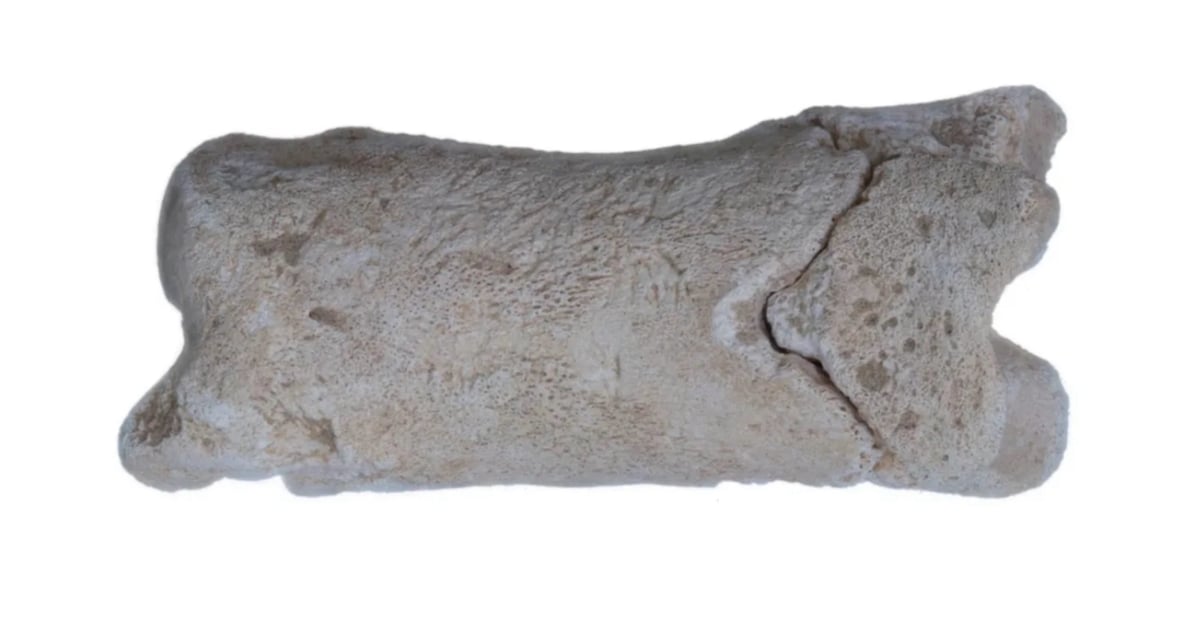Mystery Unveiled: Ancient Egyptian Bone Whistle Could Reveal Secrets of 3,300-Year-Old Law Enforcement
So, imagine stumbling upon a tiny whistle carved out of a cow’s toe bone—yep, you read that right—in an ancient village buzzing with Pharaoh Akhenaten’s tomb builders. Now, this isn’t just any whistle; it’s the very first bone whistle ever found in ancient Egypt, and it hints at a secret you wouldn’t expect: these laborers weren’t just hard at work, they were under some serious police surveillance! Who knew ancient Egyptians had their own version of “blow the whistle” before we even thought it up? This quirky artifact, found near modern-day Amarna in the Stone Village, suggests the whole area was more restricted than your favorite nightclub on a Friday night. Curious how a little bone whistle could unlock the mysteries of royal security and policing 3,300 years ago? Buckle up; the story’s about to get as fascinating as it is bone-chilling.
The first-of-its-kind whistle was found in an ancient village for laborers who worked on the royal tomb of the pharaoh Akhenaten, suggesting the site was heavily policed and restricted.

Michelle LangleyThe ancient bone whistle is made from cow’s toe.
Archaeologists in Egypt recently unveiled their findings from the analysis of a bone whistle carved from a cow’s toe that was originally found at the ancient capital of Akhetaten in 2008. They determined that the artifact was likely used by “police officers” guarding tomb builders during the reign of Akhenaten, around 3,300 years ago.
The whistle came from the Stone Village within the abandoned site near modern-day Amarna, and it represents the first known example of its kind from ancient Egypt.
A Unique Find From The Amarna Project
This “very unique” whistle is carved from the toe bone of a juvenile cow and is about two-and-a-half inches (6.3 centimeters) long. It fits comfortably in the palm of a hand and has a single hole measuring a quarter inch (6 millimeters) in length drilled through it.
Although this whistle was only recently analyzed by researchers, it was actually first unearthed back in 2008.
At the time, archaeologists with the Amarna Project — a long-running research initiative focused on Akhetaten and the surrounding area — were working in the Stone Village, which lies adjacent to another settlement known as the Workman’s Village. These villages seemingly housed laborers associated with the construction of a royal tomb in Akhetaten during the reign of the pharaoh Akhenaten — the father of King Tutankhamun. The whistle serves as evidence that the communities were “heavily policed because of their proximity to the royal cemetery,” researchers wrote in the study, which was published in the International Journal of Osteoarchaeology.
In experiments, researchers created a working replica of the whistle from a fresh cow toe bone. They found that the “natural form of the end of the bone creates the perfect surface to rest your lower lip so you can blow across the hole,” study co-author Michelle Langley told Live Science.
Wider Implications About Policing In Ancient Egypt

Michelle LangleyThe small hole drilled through the whistle.
The whistle was found in what appears to have once been a checkpoint structure in Stone Village. Based on the remains of roads, small buildings, and vantage points around that area, researchers theorized that law enforcement or guards once patrolled the village to control access, especially to the sacred royal tomb area. Like some modern police, it seems these ancient guards carried whistles to use as a warning.
Ancient Egypt employed special policing units during the New Kingdom period. For instance, the Medjay are well known from various texts and iconography. What’s more, Akhetaten houses tombs such as that of Mahu (who held the title of chief of police), with wall scenes depicting sentries guarding roadways and gates and vigilantes being brought into custody — some while apparently trying to breach restricted zones.
“This area appears to have been heavily policed in order to keep the sacred location of the tomb known and accessed by only those that need to know and go there,” Langley said.
Langley described the find as “very unique,” marking the first time archaeologists have identified a bone whistle from ancient Egypt. While whistles made of other materials or for other purposes exist elsewhere, this particular artifact provides new insight into how control, surveillance, and security were managed surrounding royal projects.
Some details, however, remain uncertain.
While the whistle’s purpose as a policing instrument is plausible and supported by contextual evidence, there are no direct records to confirm its use in that capacity. Additionally, it tells researchers little about the precise daily routines of the guards who used these instruments or the broader administrative system of Akhetaten.
The further analysis of finds like this and the site more broadly could help to fill in some of those gaps.
After reading about the discovery of a bone whistle in Egypt, discover when the pyramids were built. Then, explore King Tut’s tomb and the story of its discovery.



















